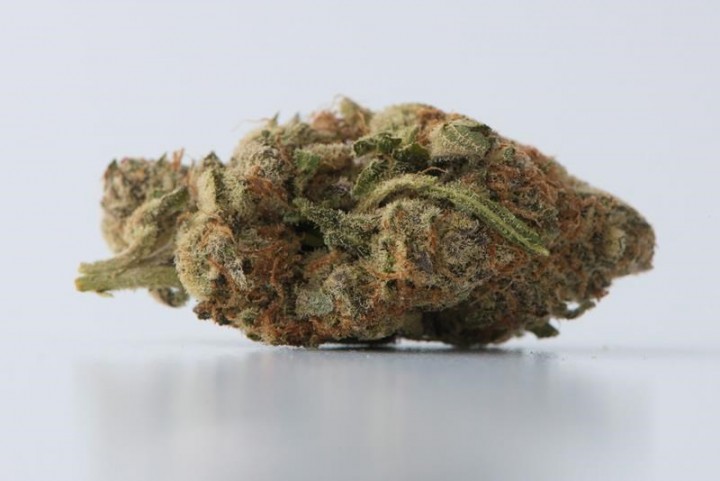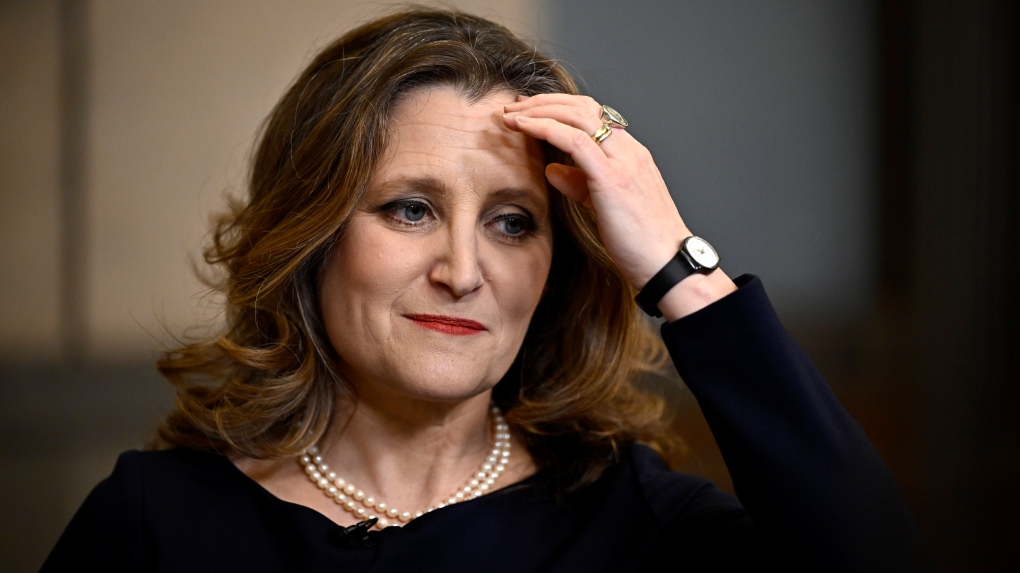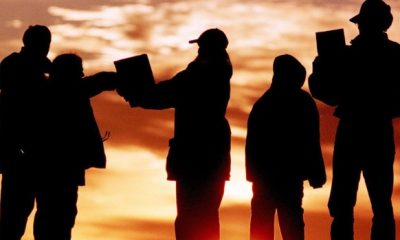News
Ottawa on track to spend $200M per year on cannabis for veterans

|
|
Ottawa is reimbursing a record number of veterans for medical marijuana, with new figures showing the federal government shelled out more than $150 million in the last fiscal year — more than double the amount just three years ago.
And that is only the beginning as the figures from Veterans Affairs Canada reveal the government is on track to spend nearly $200 million this year as more and more former service members ask the government to pay for their cannabis.
While experts and advocates are uncertain about the reasons for the surge, they agree about the need for more information on the real benefits and potential harms of medical marijuana for veterans — and taxpayers paying for it.
“We desperately need better evidence to understand if these policies … and if the current usage is likely to have more benefit or do more harm,” said Jason Busse, associate director of the Michael G. DeGroote Centre for Medicinal Cannabis Research at McMaster University.
“We don’t know that right now.”
Veterans Affairs started reimbursing a small number of former military personnel for their medical cannabis in 2008, at which point the approvals were granted on an extremely limited basis and with the approval of a medical specialist.
The move followed a series of court decisions more than 20 years ago that first allowed a legal exemption for the consumption of medical marijuana from criminal prosecution.
Then in 2014, Health Canada relaxed its rules around who could authorize the use of medical marijuana to Canadians and for what conditions and circumstances. The new rules didn’t put a limit on the amount of pot that could be authorized, or the cost.
Veterans Affairs at the time was reimbursing 112 ex-service members for their pot, at a cost of $409,000. By the following year, that number had increased to more than 600, at a total cost of more than $1.7 million — with no end to the increase in sight.
Figures provided by the department to Veterans Affairs Minister Lawrence MacAulay in June for questions in the House of Commons show the government reimbursed more than 18,000 ex-military members for $153 million in medical marijuana claims in 2021-22.
“For fiscal year 2022-23, program expenditures are forecasted to be $195.2 million,” adds the note.
The skyrocketing claims and costs have continued despite the Liberal government decision in 2016 to limit claims to three grams per day at $8.50 per gram, with an allowance of up to 10 grams per day with medical authorization.
Those limits resulted in an explosion of anger from veterans and advocates who said the limits would negatively affect them, though the note to MacAulay said one in five veterans was receiving more than three grams per day.
By comparison, Health Canada says the number of Canadians across the country registered to use medical marijuana, which is normally paid for by insurance companies, fell to 257,000 in December 2021 from 345,000 in October 2018.
Officials at the B.C.-based Veterans Transition Network, which provides peer support and counselling programs for former Armed Forces members, have seen the explosive growth in medical marijuana use by veterans firsthand in recent years.
“Seeing those numbers … of just the growth year over year, to my mind, it fits with what we’ve seen in terms of how commonplace it’s become in the veterans’ care landscape,” said executive director Oliver Thorne.
The network’s national clinic director Dr. Paul Whitehead estimated around half of veterans participating in the organization’s programs now use some sort of cannabis product for medical reasons, though the exact type, frequency and dosage varies significantly.
Experts cited a number of potential reasons for the increase, including the COVID-19 pandemic, broader awareness, less stigma around cannabis use, and the emergence of a multimillion-dollar industry around medical pot for veterans.
Some veterans and advocates have argued that the rise of medical cannabis has helped reduce the use of opioids and other narcotics.
While he couldn’t say whether that was true, Whitehead reported a decrease in alcohol use among his organization’s clients.
Yet he and others also pointed to the many questions that remain about if medical marijuana really helps veterans — and if so, how and why.
“We feel confident there is absolutely some benefit because veterans tell us that, and they tell us that frequently,” said Thorne. “But we don’t know the how. And I think that’s what we really need to know: how does it work? Why does it work?”
Busse has been attempting to answer some of those questions at McMaster. What he’s discovered so far is a paucity of real data about the impacts of medical marijuana, with what is available showing little to no impact on most people with chronic pain or sleep problems.
Even those studies that have been conducted have been extremely limited, Busse added, with little information about the impact on those suffering from post-traumatic stress disorder or even the long-term impacts of using cannabis.
The lack of concrete information comes despite the federal government having repeatedly promised over the years to fund research on the issue. Busse blamed Health Canada regulations and red tape for having prevented large-scale clinical studies.
“It was just (this week) that we finally got approval to run our first trial, despite having gotten funding for it over two years ago,” he said. “And I know that a lot of companies have simply given up on doing clinical trials in Canada.”
Veterans Affairs would not publicly speak to any anticipated changes to its reimbursement rules, but officials told MacAulay in June that as it is “an evolving area of treatment, Veterans Affairs Canada is regularly reviewing the latest available evidence and adjusting our policy as needed.”
While Thorne and Whitehead have heard veterans testify to the benefits of medical marijuana, and the Veterans Transition Network doesn’t support limiting access, there are concerns that some former service members will use the drug to avoid their psychological trauma rather than face it.
“We’d love to see the numbers of spending go up each year for counselling programs, whether it’s ours or it’s any other,” Thorne said. “We’d love to see that similar kind of uptake.”
This report by The Canadian Press was first published Aug. 7, 2022.
Lee Berthiaume, The Canadian Press
News
That offer to buy your time-share could be from a Mexican drug cartel – CBC.ca
The phone calls were coming on an almost daily basis. Lawyers, real estate agents and people with cash in hand, all looking to purchase Rod Pratt and Diana Paquette’s Mexican time-share at a handsome price.
It seemed like a godsend to the Edmonton couple. On their first trip to Mexico, for a 2016 wedding, they had made a snap decision to invest in a beachfront property in Nuevo Vallarta, on the Pacific coast, just north of the resort town Puerto Vallarta.
But nothing was as it appeared. Even after spending $95,000 US on the time-share and three upgrades, there were room charges, maintenance fees, bills for food, drink and airfare — meaning a week’s vacation still cost $5,000 or more. An amount they couldn’t afford.
“Anything you look at and touch, it’s got a dollar tag on it,” said Pratt, 65. “It’s definitely not all-inclusive.”
By the spring of 2019, they were desperate to unload the time-share. So when a broker from Atlanta cold-called and said he had a client willing to pay $155,000 US, Pratt pounced. A Mexican real estate agent and buyer joined the conversation, and a contract was signed. All that was required to seal the deal were a few, upfront payments from Pratt.
“They have, like, these fees and stuff they wanted for opening and closing… all kinds of little ones,” he said. “Anywhere from maybe $1,500 US to $10,000.”
The supposed deal fell through when Pratt balked at paying as much $30,000 US for “taxes.”
But soon, his phone was again ringing with other lucrative offers. Over the next three years, Pratt entered two more sales agreements, and accepted a short-term rental offer. All the purported deals followed the same pattern — upfront demands for fees, costs and taxes, with the promised payout always a step away. In the end, he estimates he lost more than $200,000 Cdn to the scams.
“They were all saying they were lawyers, they were realtors. They were everything under the sun,” said Pratt. “But none of it was legit.”
Ultra-violent history
The Jalisco New Generation Cartel (known by its Spanish initials CJNG) has existed for only 15 years, yet ranks one of Mexico’s largest and most powerful criminal organizations. It operates in at least 27 of the country’s 32 states, with affiliates across the globe. Its home base is Puerto Vallarta.
Over its ultra-violent history, the group has expanded its activities from drug production and trafficking, to kidnapping and extortion, to less predictable turf like the avocado trade and, more recently, time-share scams.
The cartel “generates substantial revenue for its multi-faceted criminal enterprise through its time-share fraud network,” U.S. Treasury Secretary Janet Yellen warned last November.


“CJNG uses extreme violence and intimidation to control the time-share network, which often targets elder U.S. citizens and can defraud victims of their life savings.”
Any doubts about Jalisco’s new focus on time-shares were put to rest by a horrific massacre in May 2023, when authorities recovered the garbage-bag-wrapped, hacked-up remains of eight young call centre workers from a ravine near Zapopan, Mexico.
The call centre was one of several used by the cartel for real estate fraud, officials said. The six men and two women had reportedly raised the cartel’s ire by trying to quit.
No one is sure just how much CJNG is earning from its time-share frauds; just as it’s not known for certain if the cartel was behind the bogus offers made to Pratt. The FBI says it received more than 600 complaints related to such scams in 2022, with losses totalling almost $40 million US. But other estimates run to hundreds of millions each year — targeting Americans and Canadians who own time-shares in Cancun, Acapulco and Puerto Vallarta.
Jalisco’s diversification is a measure of its success, says Valentin Pereda, a University of Montreal criminologist who researches Mexican gangs.
“When a cartel is successful, the number of employees in its ranks increases and the more employees you have, the more money you need to pay them and to keep them loyal to you,” he said. “At the end of the day, these are business enterprises and they operate largely with that rationale, thinking ‘How am I going to maximize income and minimize costs?'”


Having a wide array of both criminal and legitimate business interests also helps insulate the cartel from the economic disruption of police crackdowns, or drops in the price of street drugs.
Pereda says time-share scams may be particularly attractive because they are unlikely to provoke serious blowback from the U.S. or Canadian governments. Several gang members and businesses have been sanctioned over the frauds, but no one is forming a task force to tackle the problem. “It would be one of many competing priorities when it comes to the cartels and criminal activity,” he said.
Sophisticated scam
On one level the time-share fraud is familiar — with victims coerced into advancing funds on the promise of a big payday, throwing good money after bad. But where Jalisco’s scam differs from Nigerian princes, or inheritances from long-lost relatives, is in the backstory.
The cartel has established fake websites for U.S. lawyers and brokers, and provides official-looking forms and contracts. And once the victim has clued in, there are even follow-up calls from purported investigators, offering to help recover the funds.
Guillermo Cruz — a Toronto lawyer, licensed to practise in both Ontario and Mexico — receives five to 10 calls a month from time-share scam victims, looking to recover their lost payments.
“The number of cases is growing,” he said.


The documentation provided by the cartel can appear convincing, says Cruz.
“I think that it is quite sophisticated. Unless you have a background in Mexican law and you’re familiar with time-share law in Mexico it’s very likely that you would believe that information that has been provided is accurate,” he said.
Pratt shared more than 60 pages of documentation with CBC News, detailing the purported purchase and rental offers he received. They list a half-dozen different corporate entities in Mexico, and several supposed brokers and lawyers in the United States, along with names, signatures, addresses and phone numbers.
Several of the companies appear in an online database of information gathered from other time-share frauds. Websites are still active for at least two of the firms.
A lawyer who claimed to practise in New York City, with offices in a ritzy Manhattan skyscraper, doesn’t appear in state licensing records. (Although there are three legitimate lawyers with the same name in the United States, none of them deal with real estate or Mexican time-shares.)


A purported El Paso real estate broker claims to be operating out of a historic downtown building that is currently being redeveloped into a hotel.
Cruz leafed through Pratt’s documents and picked out a supposed tax form related to the 2019 offer, which bears the seal of a previous Mexican administration; a small but significant red flag.
Cruz says the U.S. and Canadian governments need to put more pressure on Mexican authorities to crack down on the frauds, and create easier ways for time-share owners to validate whether offers are legitimate.
If such measures arrive, they will already be too late for Rod Pratt and Diana Paquette.
The couple have been busy packing up their Edmonton home, preparing to move and heading for a divorce.
“All I was really trying to do was get some money back for my wife and for my life,” Pratt said, tearing up.
“I would gladly trade the trips to Mexico for a life back,” he said. “I wish we would have never went to Mexico.”
Jonathon Gatehouse can be contacted via email at jonathon.gatehouse@cbc.ca, or reached via the CBC’s digitally encrypted Securedrop system at https://www.cbc.ca/securedrop/
News
Just bought a used car? There’s a chance it’s stolen, as thieves exploit weakness in vehicle registrations
|
|
The fight against Canada’s worst-ever auto theft epidemic has largely focused on ramping up inspections at shipping ports, where organized crime groups have exported the overwhelming majority of stolen vehicles.
But criminals are adapting, police say, by increasingly selling hot vehicles in Canada to unsuspecting buyers with little protection, exploiting a weakness in provincial registration systems that veteran investigators argue needs to be fixed.
“The market is so lucrative it’s easy cash,” said Det. Sgt. Greg O’Connor of Peel Regional Police, west of Toronto.
While it is impossible to know what criminals do with all stolen cars and difficult to track shifting trends, police now estimate nearly one-third of stolen vehicles are being resold in Canada, marking a significant increase from just six months ago when the vast majority of vehicles were believed to have been exported.
And often, buyers have no idea.
Derek Crocker bought a used Ford F-150 pickup truck from a dealership in Toronto in 2022. Just a few months later, his own investigation revealed the truck’s vehicle identification number — or VIN — had been replaced, mirroring the VIN of a similar truck registered in Utah.


“The whole reason you buy it from a dealership is so you don’t have to worry about dealing with that sort of thing,” he said.
In retrospect, there were small tells.
After Crocker entered what should have been the truck’s unique VIN in Ford’s app, the function to remotely start the vehicle never worked. The app also listed the vehicle as being located in the United States and indicated a different amount of fuel than his own vehicle tank was holding.
But it wasn’t until his F-150 was in an accident and required body work that the problem with the VIN was revealed. The repair shop ordered parts based on the VIN it saw on the dash. But the parts did not match.
“So I Googled the VIN number that was on my truck, and I found a truck for sale in Utah,” said Crocker.


It turns out that was the true VIN, which thieves had cloned, placing fake VIN stickers with the Utah truck’s VIN on top of the true number for the truck Crocker bought.
VINs are most prominently displayed on a vehicle’s dashboard, as well as on the ownership title. When a vehicle is stolen, the VIN is flagged across North America to prevent it being sold.
But criminals are replacing the VIN plate, often with one from a comparable vehicle that has been totalled, legally exported or one registered in another province or U.S. state. They may go through junkyards, export records or simply walk through a mall parking lot to find a VIN to clone.
In doing so, they re-VIN or “wash” the vehicle of its stolen status.


Crocker called police, who seized the vehicle and returned it to the insurance company of the original owner.
Crocker’s own insurance would not cover his loss because he’d — albeit unknowingly — purchased a stolen vehicle. After a long discussion with the dealership that sold him the stolen truck, his money was returned.
“They did nothing extra,” Crocker said. “They didn’t help me at all.”
How could 2 cars with the same VIN be registered?
Provincial centres that administer vehicle registration, such as ServiceOntario, do not have a system that checks if VINs already exist in other jurisdictions.
“You can have a vehicle registered in one province and the same VIN on a different vehicle registered in another and we need to stop that,” David Adams, president and CEO of Global Automakers of Canada, told a recent auto theft summit in the Greater Toronto Area.
Neither Canada nor the United States has a national vehicle registry. Multiple police agencies are urging federal and provincial governments to create one.
“The reality is this is a national issue. And that’s why a national registry that moves itself beyond any sort of provincial jurisdiction is important in all capacities,” Nick Milinovich, deputy chief of Peel Regional Police, said in an interview.
CBC News asked Ontario’s Ministry of the Solicitor General why the province’s database can’t detect whether the same VIN is actively being used in another province or state.
“If changes to the provincial registration process are required, we won’t hesitate to make them,” it responded in a statement.
How to spot a potentially stolen car for sale
While it is impossible to know precisely how many fraudulently registered stolen vehicles are back on the road, recoveries have surged.
“The number of re-VINS is just blowing through the roof right now,” said O’Connor. “It’s costing drivers, banks, insurance companies big money. It’s a massive problem.”
It is impossible to know the full extent of the illegal economy and the proportion of vehicle exported versus those kept in the country. But police forces across southern Ontario have reported a surge in recoveries of vehicles that have had their VINs altered.
Car buyers are being advised to look at the VIN on the dashboard and the pillar between the front and back driver’s side doors to see if the numbering is bubbling, a sign there may be a sticker on top of the real VIN.
Running the VIN through a paid service like Carfax could also yield key warning signs. For example: a vehicle that records show has been declared salvage after a crash later reappearing undamaged. Or a VIN with a sales and registration history almost exclusively in one province or state suddenly being for sale in another.
If an insurance company discovers a vehicle has a fraudulent VIN, the policy is voided. When police seized Crocker’s truck, insurance would not pay to replace it. He was only able to recover his money when the dealership that sold the stolen truck paid him out.
But police and insurance investigators have begun to warn of a proliferation of re-VINed vehicles being sold exclusively through social media platforms like Instagram.
“If you’re paying cash for that vehicle [in a private sale] or you do a bank transfer,” said O’Connor, “there’s no recourse.”
WATCH | A stolen car is found in Ghana:
CBC’s David Common informs Len Green that his stolen car has been found in Ghana, 8,500 kilometres from Toronto, where it first went missing a year ago.
Registry employees alleged to be in on the crime
Police also allege organized crime has recruited employees at ServiceOntario, the registration centres operated on behalf of the province that offer an array of services, including issuing licences and managing the database of registered vehicles.
At the end of 2023, Toronto police charged seven ServiceOntario employees with a collective 73 charges, including fraud over $5,000, tampering with a vehicle identification number, breach of trust by a public officer and trafficking in identity information.
They allegedly provided an auto theft ring with registered addresses for specific vehicle models. Once stolen, the same employees assisted the ring in “re-VINing” the vehicles.
Fraudulent VINs may never be detected, although Peel police alone have seized more than 50 such vehicles in 2024 alone.
At other times, employees at ServiceOntario have flagged suspicious activity, such as when the same person shows up dozens of times to register different vehicles. That was allegedly the case with Milton Hylton, who was charged with 168 counts of various Criminal Code offences in March.
He was released on bail, pending trial. No charges are yet proven.
WATCH | An alleged repeat re-VINer is arrested:
CBC News takes you inside a police surveillance operation, witnessing an auto theft takedown connected to a growing aspect of the billion-dollar crime. Criminal rings are increasingly selling stolen cars in Canada to car buyers who often have no idea.
According to the warrant used to search his home and requested by Peel Regional Police Const. Gurinder Athwal, the 24-year-old travelled to “multiple ServiceOntario locations throughout the province and fraudulently registered vehicles.” Police say more than 100 vehicles were involved, and describe stolen Dodge Rams, Dodge Durangos and BMWs among them.
CBC News was present at the moment of Hylton’s arrest in Mississauga as multiple undercover police vehicles conducting surveillance moved in.
As investigators searched and then towed his silver Mazda, they say they found documents to register even more vehicles inside.
Hylton had just a few weeks earlier been banned from entering ServiceOntario locations without an appointment, because of suspicions. He was in the company of a woman he identified as his girlfriend. His sister was also arrested days later and now faces 36 charges of uttering forged documents and trafficking of stolen goods.
3rd-party registration being exploited
In a news release, Peel police describe Hylton as using “loopholes in the ServiceOntario procedures that allow ‘authorized’ individuals to conduct third-party transactions.”
While third-party registration is intended for car dealers, provisions for it mean nearly any individual can transfer registration of a vehicle or register a vehicle in another person’s name.
This process is typical in other Canadian provinces, too.
“It’s a huge problem,” said O’Connor. “And that’s how a lot of these vehicles are getting through.”
For instance, the warrant in the Hylton case alleges he transferred vehicle ownerships to both a speciality tool shop in Etobicoke and an automotive exporter in St. Catharines. Neither business authorized the transfers, and both insist Hylton is neither an employee nor known to them.
Were the vehicles in question stolen, the new registration would have detached them from their previous owners. Anyone buying the vehicles would be none the wiser and would have no insurance or other protection if the vehicle’s stolen status was ever uncovered.


Peel police say Hylton sold dozens of vehicles over a year through social media under the Instagram handle “Royalty in the Building.”
That name is associated with Facebook and Instagram accounts where apparent car buyers offer testimonials.
“I called up Milton. I told him I got my money up, I need plates, I need a car. And he got it just like that,” a person said in a testimonial while standing in front of a Honda Civic.
“Got my new SUV, fully loaded. Tints, light, rims, inside’s clean. Everything’s legit,” another person said in a testimonial.
“You give him your cash. You’re on the road. You ain’t got to go to ServiceOntario. You don’t got to do no running around,” said another.
WATCH | Inside a weeks-long auto theft investigation:
CBC’s David Common gets exclusive access inside an auto theft surveillance operation, targeting a suspect who allegedly re-vinned more than 100 stolen vehicles to be resold, sometimes to unsuspecting buyers in Canada.
CBC News spoke with several police and insurance officials from across the Greater Toronto Area about third-party registrations.
Each insisted the loophole needed to be closed to prevent illegal transfers. But none wanted to speak on the record, citing the provincial Ministry of Transportation as a good partner they did not want to publicly besmirch.
Meanwhile, the auto theft problem continues to grow.
In 2022, an unprecedented $1.2 billion worth of vehicles were stolen across the entire country. By 2023, more than $1 billion was lost in just Ontario alone, according to the Équité Association, the national organization charged with reducing insurance fraud.
“It’s one of the top three revenue generators for organized crime,” said Milinovich. “It’s high reward, low risk, and an easy crime.”




News
Federal budget 2024 disliked by half of Canada: poll
|
|


OTTAWA –
A new poll suggests the Liberals have not won over voters with their latest budget, though there is broad support for their plan to build millions of homes.
Just shy of half the respondents to Leger’s latest survey said they had a negative opinion of the federal budget, which was presented last Tuesday.
Only 21 per cent said they had a positive opinion, and one-third of respondents said they didn’t know or preferred not to answer.
Still, 65 per cent of those surveyed said the plan to spend $8.5 billion on housing, aimed at building 3.9 million homes by 2031, is good for the country.
Leger’s poll of 1,522 Canadians last weekend can’t be assigned a margin of error because online surveys are not considered truly random samples.
People in Alberta were most likely to say they had a very negative impression of the budget, with 42 per cent selecting that option compared to 25 per cent across the entire country.
More than half of the people who took the poll said they are in favour of the government’s plans to spend more on energy efficiency, national defence and student-loan forgiveness for health care and education workers.
And 56 per cent said they think the increase to the capital gains tax inclusion rate — a move that’s estimated to raise another $19.4 billion in revenue over the next four years — is a good thing.
The Liberals are billing the change as critical to their plan to improve generational fairness by taxing the ultra-rich.
It has drawn criticism, including from the Canadian Medical Association, which warned on Tuesday that it could affect the country’s ability to recruit and keep physicians.
The budget proposes to make two-thirds of capital gains — the profit made on the sale of assets — taxable, rather than half. For individuals, this would apply to profits above $250,000, but there is no lower threshold for corporations.
The medical association said many doctors will face higher taxes because they have incorporated their practices and used those companies to save for retirement.
While the Liberals are aiming changes to the capital gains tax at younger Canadians including millennials and gen-Zers, Leger’s poll found it had the support of 60 per cent of respondents over the age of 55 — the highest among any age group.
People between 18 and 35 were least likely to support the Liberal plan to spend another $73 billion on defence in the next two decades. Just 45 per cent of respondents in that age group said ramping up defence spending is good for the country, compared with 70 per cent of people over the age of 55.
Leger also asked questions about the country’s fiscal future.
Almost half the respondents, 47 per cent, said they want to see the government cut back on spending and programs to get the budget balanced as quickly as possible.
Just 16 per cent said spending more and running large deficits is the best plan for the next five years, and 14 per cent want to see the government increase taxes to bring the deficit down.




-



 Politics24 hours ago
Politics24 hours agoOpinion: Fear the politicization of pensions, no matter the politician
-



 Politics23 hours ago
Politics23 hours agoPecker’s Trump Trial Testimony Is a Lesson in Power Politics
-



 Science23 hours ago
Science23 hours agoNASA Celebrates As 1977’s Voyager 1 Phones Home At Last
-
Media16 hours ago
B.C. online harms bill on hold after deal with social media firms
-
Media22 hours ago
B.C. puts online harms bill on hold after agreement with social media companies
-
Business22 hours ago
Oil Firms Doubtful Trans Mountain Pipeline Will Start Full Service by May 1st
-
Media21 hours ago
Trump poised to clinch US$1.3-billion social media company stock award
-



 Sports23 hours ago
Sports23 hours agoNHL teams, take note: Alexandar Georgiev is proof that anything can happen in the playoffs














